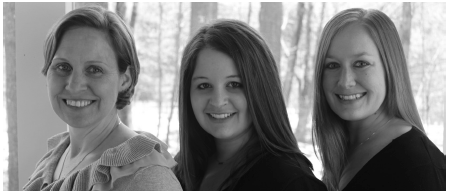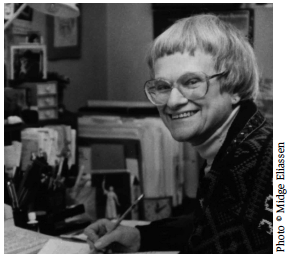ALAN v42n1 - From the Editors
From the Editors

This issue’s theme emerged from conversations at the 2013 NCTE Convention and ALAN Workshop in Boston. As we listened to talk both formal and informal, it was clear that we, as educators from all regions and backgrounds, possess a passion for adolescents, the books intended for them, and the authors and publishers who make these texts possible. We recognize the power of story to change lives, grant hope, create resilience, and offer solace. And yet, in the same conversations, too many of us expressed a sense of defeat and isolation, fear and despondence, as we imagined returning to our classrooms a few days following.
We believe that, as educators, we need to be our own best allies as we fight to teach in ways we know to be good and right and true. We need to know how to defend our selection of materials and our practices as we stand our ground in the face of scripts and censors, standards and accompanying tests. We need to band together and unite around our shared commitment to kids and YA literature, offer our own evidence- based support for the innovative work we do in our classrooms and libraries, and celebrate the ways in which we encourage our own adolescent students to think independently and act in good conscience, even when the odds feel daunting.
As ALAN members, we recognize the value of stories intended for adolescent readers and strive to share YA titles with the students with whom we work— whether they be middle or high school students, teachers or librarians in training, or young readers in our communities—in innovative, progressive ways. And yet, we might express surprise when we interact with others who don’t—or won’t—do the same. At a recent meeting where local teachers and university faculty discussed questions of the ideal high school literature curriculum, a high school teacher posed the question, “Do I give students what they want, or do I give students what they need?” The assumption that underpinned this query was that students need the classics but want more contemporary YA titles. As ALAN members, we are used to thinking in a particular way about literature and how we teach it, a way that begins with readers and their interests and needs rather than a predetermined list of titles deemed worthy. This issue reminds us that we share buildings with some who don’t share our passion for YA titles and that the path we pursue isn’t always paved.
However, the rocks and roots along the path that challenge our convictions can also serve to strengthen them. Rather than becoming complacent and closing our classroom doors in the belief that we can offer up good stuff there and there alone, we can continue to educate and advocate. In our view, change flourishes when passion and hope persist. With this issue, we begin with the passion expressed by author A.S. King and her call to arms against those who attempt to limit readers’ right to choose. We end with hope shared through the wise words of author Joan Bauer, whose belief in a force for good even amidst the very bad evokes images of light in the darkness. And in between, we offer research-based support for the titles and practices that might support our footing as we stand our ground.
In his article, “In Defense of Messing About in Literature,” Robert Montgomery draws upon David Hawkins’s science work to provide a theoretical and practical foundation for encouraging students to “mess about” in literature through a series of phases that foster positive reading experiences.
James S. Chisholm and Bethany L. Keller in “Making Connections during Transactional Discussions: Adolescents’ Empathic Responses to Thirteen Reasons Why ” explore how adolescent readers engaged empathically during literature circle discussions about Thirteen Reasons Why (Asher, 2007), revealing how students leveraged empathic responses during discussions to promote literary analysis of Asher’s novel and critically connect issues from the text to their own lives.
In “At the Intersection of Critical Digital Literacies, Young Adult Literature, and Literature Circles,” Janette Hughes and Laura Morrison investigate student participation in literature circles designed to focus on global issues of social justice. Students were given opportunities to strengthen their critical digital literacies through opportunities to create digital texts that reflected issues of power, inequality, and injustice.
Cammie Kim Lin, in her article, “Queer(ing) Literature in the Secondary English Classroom,” explains how teachers can effectively use YA books with LGBTQ characters to queer , or disrupt, common assumptions about sexual identity, leading students to better understand the human experience and become agents of social change.
In their piece, “Linked Text Sets in the English Classroom,” Kristine E. Pytash, Katherine E. Batchelor, William Kist, and Kristen Srsen report on the failings of the current reading model used in many high school classrooms and stress the importance of using linked text sets to address the increasing multimodality of reading and writing, honor student voice and choice, enhance cognitive and sociocultural elements of learning, and connect to the CCSS.
And Meghan E. Barnes’s article, “Challenging Adolescence through Hybrid Learning Spaces,” explores a student-led approach to literacy instruction that encouraged adolescent readers to develop solidarity, individuality, and agency through explorations of young adult literature.
In the final section of this issue, you’ll find our three new columns. “Book in Review, A Teaching Guide,” edited by S.d. Collins, presents “Sugar and Spice and Everything . . . FIERCE: The Resolute Young Women of Always Emily ,” a collection of teaching strategies, activities, and resources for teaching the novel Always Emily (MacColl, 2014). Teri S. Lesesne’s “Right to Read: The Tip of the Iceberg” draws upon the metaphor of the iceberg to uncover dangerous and often unnoted examples of censorship that exist below the surface. And “Layered Literacies: Stand Our Ground against Stand Your Ground,” by Susan Groenke and Judson Laughter, with Andrew Swafford, uses multiple media and various platforms as support to explore how students are using Internet-based media to speak out and speak back about how they are being portrayed.
Given member interest in exploring online offerings for the journal, each column is available in both print and electronic formats. We encourage you to access these pieces online by typing the weblink into your browser or using the QR code located on the title pages of each column in the print journal. Using a smartphone, you can download a free QR reader application that will allow you to access QR-coded materials (QR Reader for iPhone, Quick Scan–QR Code Reader, and NeoReader are popular choices).
We hope this issue inspires you to consider the necessity (and complexity) of standing our ground as we work to maintain and strengthen our collective work with the young people in our care.
by EMW
